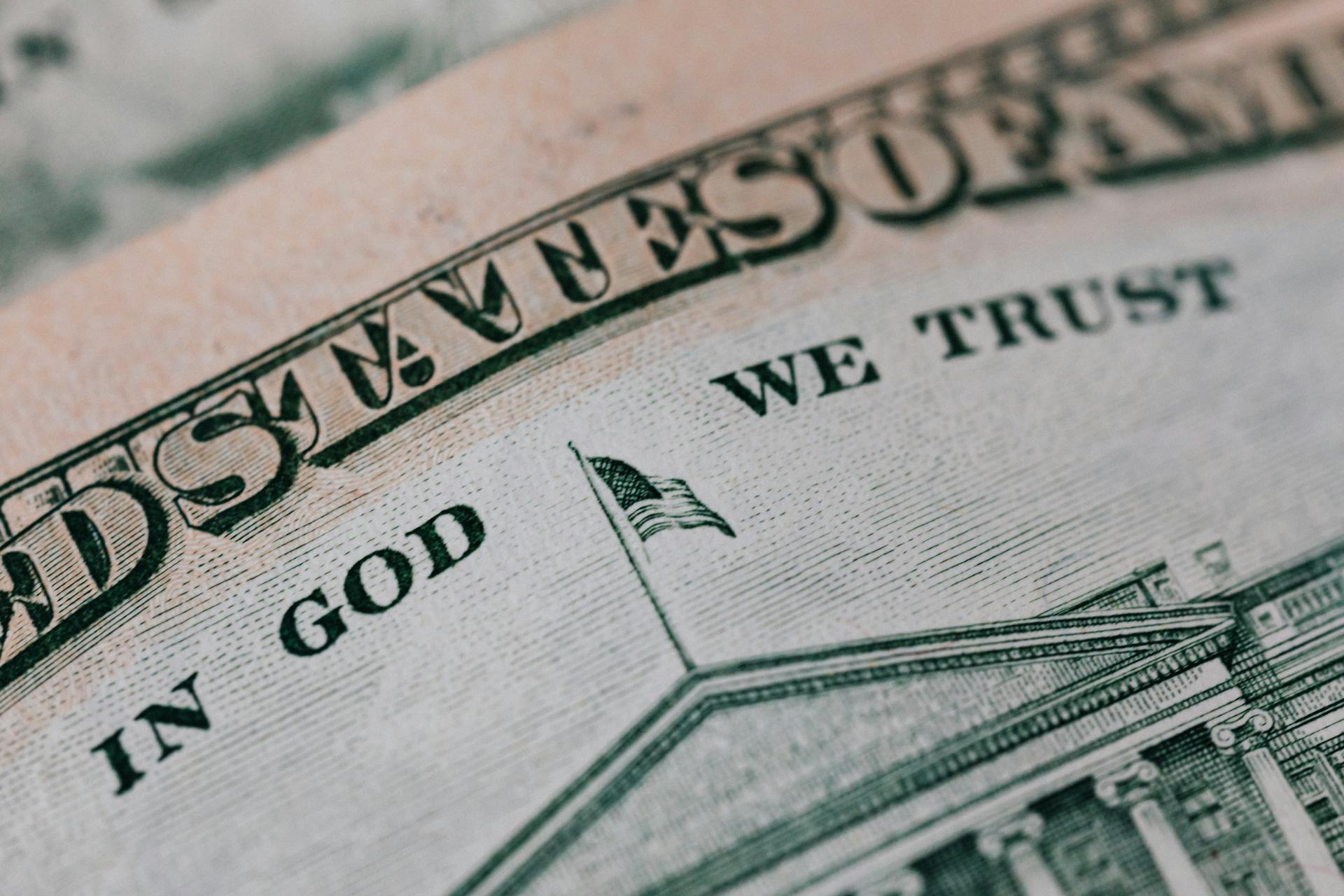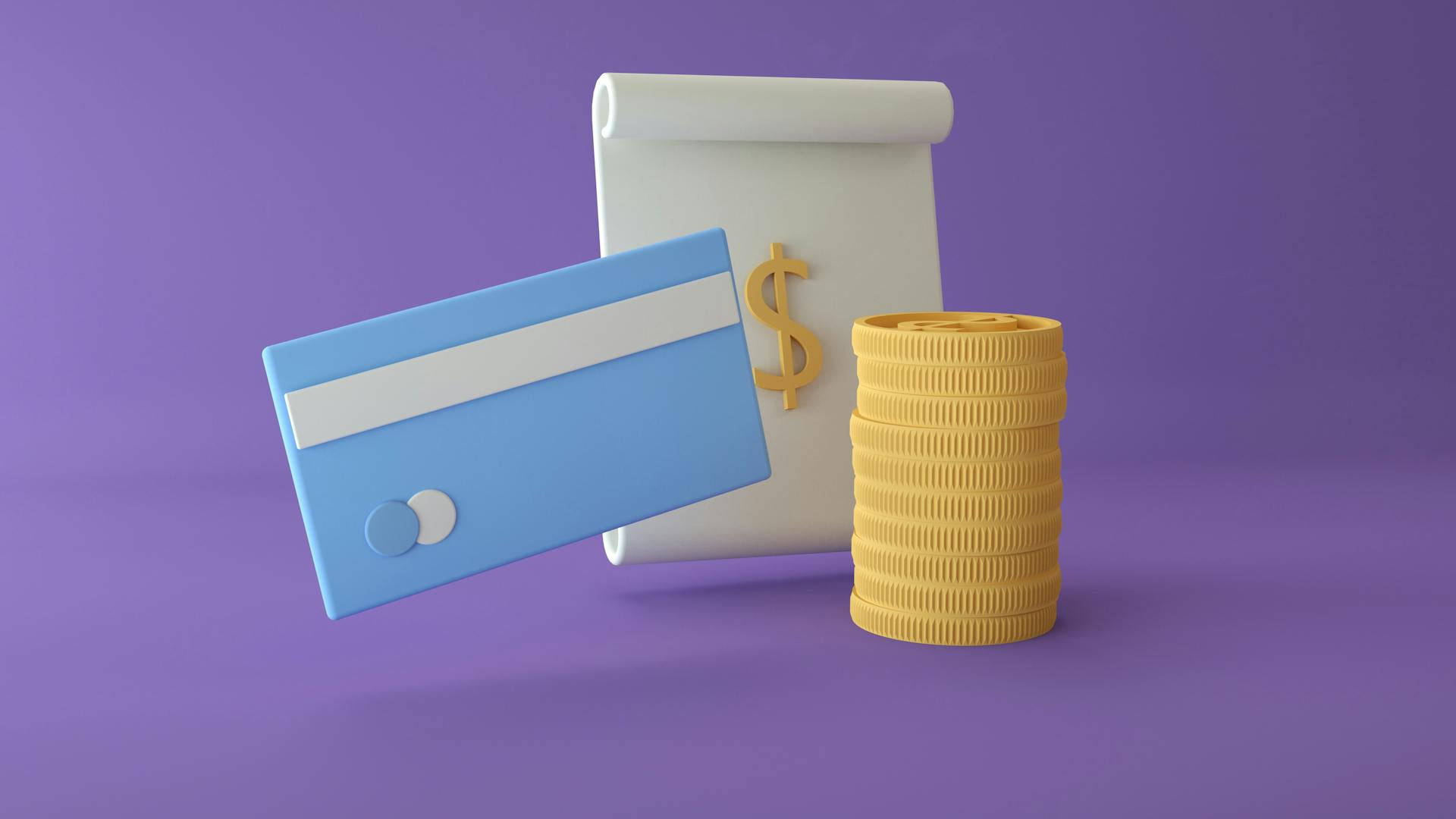
If you're considering person to person lending, you have several options to explore. Peer-to-peer lending platforms connect borrowers with investors, cutting out traditional financial institutions.
You can lend as little as $25 on some platforms, making it accessible to a wide range of investors.
Platforms like Lending Club and Prosper have been around since 2006 and 2005 respectively, providing a long track record of stability and growth.
For borrowers, interest rates can be lower than those offered by traditional lenders, but credit scores are still a major factor in determining eligibility.
Credit scores of 660 or higher are often required to qualify for the best interest rates on these platforms.
What Is Person to Person Lending?
Person-to-person lending, also known as peer-to-peer lending, is a way for individuals to borrow money from others without going through traditional financial institutions like banks. This type of lending allows borrowers to connect directly with lenders who are willing to invest in their loan.

Borrowers submit loan requests to a peer-to-peer lending platform, which then connects them with investors who can fund their loan. The platform handles the entire process, including creditworthiness evaluation, loan servicing, payments, and collections.
Peer-to-peer lending is faster and more convenient than traditional bank loans, offering more flexible borrowing terms and easier access to funds. This is because P2P lenders don't have to adhere to the strict regulations imposed by banks.
Investors in peer-to-peer lending can choose from various loan offers, selecting those with an acceptable risk-reward ratio. They assess the borrower's creditworthiness, reputation on the platform, and overall financial situation to make informed decisions.
The main risk for investors is potential default, with an average default rate of around 4.52% in 2017. However, investors can reduce their risk by selecting borrowers with a solid credit history and a good track record on the platform.
Here are some key aspects of person-to-person lending:
- Faster and more convenient: Peer-to-peer lending is faster and more convenient than traditional bank loans, offering more flexible borrowing terms and easier access to funds.
- Lower risk: Investors can reduce their risk by selecting borrowers with a solid credit history and a good track record on the platform.
- Higher returns: Investors can earn higher returns on riskier loans, but this comes with a higher risk of default.
Overall, person-to-person lending offers a unique opportunity for individuals to borrow money and invest in loans without going through traditional financial institutions.
Types of Loans

Peer-to-peer lending platforms offer a variety of loan types to cater to different needs. Personal loans are the most common, used for consolidating debt, financing home improvements, or purchasing an automobile. The cap on personal loans is $35,000 on most sites.
Business loans from P2P sites have more relaxed requirements and less documentation than traditional bank loans. However, they are not a source of startup cash, requiring borrowers to have a track record of at least six months.
Some platforms lend as much as $500,000 for business loans, which are often collateralized by a general lien on the business. Mortgages and refinancing offered by P2P platforms usually apply to owner-occupied residences, with a 10% down payment required and no mortgage insurance needed. Loan origination fees are not charged, and the cap is typically $3 million.
Here are some common types of peer-to-peer loans:
Types of
Personal loans are the most common type offered by P2P platforms, generally used to consolidate debt or finance home improvements.

These loans have a cap of $35,000 on most sites, making them a viable option for buying an automobile with the funds.
Business loans from P2P sites tend to have more relaxed requirements than those from banks, requiring less documentation and a track record of at least six months.
Mortgages and refinancing offered by P2P platforms usually apply to owner-occupied residences, with a 10% down payment requirement and no mortgage insurance needed.
Student loan refinancing is another specialty of the P2P marketplace, allowing students to combine up to $500,000 in student loans from multiple lenders.
Some popular P2P lending platforms include Lending Club, which offers personal and small business loans, and Prosper, which offers unsecured personal loans of up to $50,000.
Peer-to-peer lending sites provide solutions that banks may be too expensive or slow-moving to offer, like real estate development loans and small business loans.
The types of loans offered by P2P platforms can be broken down into:
Prosper

Prosper is a popular peer-to-peer lending platform that offers unsecured personal loans of up to $50,000 with competitive interest rates for American citizens.
Investors can individually purchase notes backed by these loans with minimal fees and a relatively low minimum investment requirement.
Prosper is another example of a peer-to-peer lending platform that allows borrowers to apply for personal loans, making it easier for them to access credit.
Here are some key features of Prosper loans:
Prosper loans are a great option for borrowers who need access to credit but may not qualify for traditional bank loans.
Pros and Cons
Person-to-person lending, or P2P lending, offers a unique way to invest in loans to individuals, but it's essential to be aware of its pros and cons.
One of the most significant advantages of P2P lending is the low barrier to entry, allowing you to create a portfolio with minimal capital.
A P2P portfolio can generate a steady stream of passive income through monthly payments from borrowers.

Higher yields are a major draw for investors, with potential annual returns of 10% or better.
You have control over the types of loans you fund, including the term, credit score range, and debt-to-income ratio of borrowers.
Loan diversification is also possible, with some platforms allowing you to fund entire loans or purchase notes in increments as small as $25 each.
Here are some key advantages of P2P lending:
However, it's essential to be aware of the potential downsides, including borrower defaults and limited regulation.
P2P lending platforms do go under from time to time, so it's crucial to diversify your investments across multiple platforms.
You should also be aware that P2P loans are unsecured, meaning they have no collateral backing them.
Investors are not reimbursed by the Federal Deposit Insurance Corporation (FDIC) when P2P platforms fail, and there is no FDIC protection for investor losses due to borrower defaults.
Investing in Person to Person Lending

Investing in person to person lending, also known as peer-to-peer lending, can be a great way to earn a steady stream of passive income. The low barrier to entry, which can be as low as $25, makes it one of the least costly forms of investing.
You can expect to earn a higher yield with P2P lending, potentially up to 10% annually, which is significantly higher than traditional investments. However, this comes with a higher risk, as there's no collateral backing the loans.
P2P lending platforms allow you to choose the types of loans you'll fund, giving you control over your investment. You can select loans based on factors like credit score, interest rate, and debt-to-income ratio.
Investors can also diversify their portfolios by funding entire loans or purchasing notes in increments as small as $25 each. This helps spread risk across a variety of loans.
However, P2P lending comes with its own set of risks, including potential defaults. According to some platforms, the average default rate on these loans was around 4.52% in 2017. This means you could lose some or all of your investment if a borrower defaults.
Here's an interesting read: Lending Club Investing

To mitigate this risk, it's essential to understand the borrower's creditworthiness, their reputation on the platform, and their overall financial situation. You can also consider investing in riskier loans, which may offer higher returns but come with a higher risk of default.
Here are some benefits of P2P loans for investors:
- Portfolio diversification: P2P platforms can provide a positive degree of diversification for investment portfolios.
- Good returns on investment: The median return earned by P2P loan investors has been estimated at 4.6% per year.
Regulations and Safety
P2P lending has been around for centuries, but it's still a relatively new industry with little regulation, so it's essential to be careful when selecting a platform to invest in.
The SEC regulates P2P lending platforms in the US, but it's a young industry, and regulations are still evolving. In 2016, New York state issued warning letters to 28 P2P lenders, requiring them to comply with demands to disclose their lending practices and products available in the state.
Understanding the regulations can give you more confidence in the platform and help you make informed decisions.
In the US, there are four players involved in regulating P2P platforms, including the SEC, CFPB, FTC, and state regulations.
For more insights, see: New Payday Lenders

P2P lending regulations vary significantly across regions, reflecting different approaches to investor protection, platform accountability, and market operation.
Here's a breakdown of P2P lending regulations in the European Union, United States, and United Kingdom:
As a borrower, it's essential to understand the cost of a P2P loan, which includes interest charged by investors and supplemental fees from the P2P platform.
For investors, P2P investments are not FDIC-insured, which means you may face an added degree of risk compared to other options.
Alternatives and Options
P2P lending isn't your only option for investing. You can explore alternative investments like Yieldstreet, which offers a range of opportunities to earn passive income with investments as small as $500.
Target yields with Yieldstreet have historically been in the 7%-15% range, but this can vary depending on the investment opportunity.
You can find more information on Yieldstreet's current and past investments on their website.
What Is Crowdfunding?
Crowdfunding is a way for people to raise money from a large number of individuals, often through online platforms.

It's a popular alternative to traditional fundraising methods, and one of its key features is that it allows anyone to participate, regardless of their financial situation.
In most of the world, peer-to-peer lending accounts for more than 80% of the money facilitated in crowdfunding every year.
This type of crowdfunding is also known as debt-based crowdfunding, and it's based on loans between people, rather than donations or products as rewards.
It's a unique way for people to borrow and lend money, and it's become a significant part of the crowdfunding landscape.
Comparing Bank Costs
Peer-to-peer loans can be a more expensive option than traditional bank loans. P2P lending sites often offer higher interest rates than conventional bank loans, with some loans carrying APRs of 28.7% or more.
The minimum credit score required for a peer-to-peer loan varies among different lenders, but a credit score of 600 or above is generally considered acceptable. However, some platforms may offer loans to individuals with lower scores, especially those looking for bad credit loans.
A different take: Personal Esg Score
An origination fee is a one-time charge that covers the cost of processing your loan, which can range from a few thousand dollars to as much as $40,000 or more. This fee is either deducted from the loan amount before it's disbursed to you or added to your loan balance.
To compare bank costs, consider the following:
Keep in mind that peer-to-peer loans can offer more flexible repayment terms and faster application processes, but may not always be the best option for those with good credit.
Small Businesses
For small businesses, there are alternative funding options available that can help them grow and thrive. Funding Circle offers peer-to-peer loans specifically designed for businesses looking to expand.
Funding Circle is geared towards businesses that need funding to expand, making it a great option for those with growth plans. You can borrow up to $500,000 with Funding Circle, which can be a game-changer for small businesses.
Kiva is a great alternative for micro businesses that are open to crowdfunding. With Kiva, you can borrow up to $35,000 with no interest or fees, making it an attractive option for small businesses with limited budgets.
Recommended read: Small Private Money Lenders
Alternatives

You can explore a range of alternative investments to potentially earn better returns than the market.
One such alternative is Yieldstreet, which offers various opportunities to earn passive income with investments starting at $500.
These opportunities exist in classes that have historically generated returns for decades, but were previously closed off to retail investors, such as art finance and commercial finance.
Many of these investments are backed by collateral, providing some degree of protection for your capital.
Target yields have historically been in the 7%-15% range, depending on the specific investment opportunity.
You can find details of Yieldstreet's current and past investments on their website.
Check this out: Fund Finance Loans
FAQs About Peer
Peer-to-peer lenders often operate entirely online, making the application process quicker and more convenient. This can be a big advantage if you're short on time or prefer to manage your finances digitally.
The minimum credit score requirement varies among different P2P lenders, but generally, a credit score of 600 or above is considered acceptable. Some platforms may offer loans to individuals with lower scores, especially those looking for bad credit loans.

Your credit score is a significant factor in determining the interest rate you'll be offered, with higher scores typically resulting in lower interest rates. If you have bad credit, you may still qualify for a loan, but the interest rate will likely be higher.
Many people use personal loans from peer-to-peer lenders for debt consolidation, which can simplify payments and save money over time. By consolidating multiple debts into a single loan with a potentially lower rate, you can take control of your finances.
The maximum loan amount varies by lender, ranging from a few thousand dollars to as much as $40,000 or more. Your eligibility for a higher loan will depend on factors like your credit score, income, and debt-to-income ratio.
If you don't meet the minimum credit score requirement, you might consider co-signing with someone who has a better credit score. Alternatively, you could look into bad credit loans or explore other lending options like credit unions, which may have more lenient credit requirements.
Here are some key features to keep in mind when considering peer-to-peer loans:
- Origination fee: This is an upfront fee that peer-to-peer lenders charge to cover the cost of processing the loan, typically ranging from 1% to 10% of the loan amount.
- Online experience: Peer-to-peer lenders allow borrowers to manage everything on the lender's website, from applying for a loan and uploading documents to signing the loan contract and making monthly payments.
Keep in mind that applications for peer-to-peer loans might be reviewed by multiple investors, which can take longer to fund than personal loans from banks or other online lenders – up to a week, in some cases.
Getting Started

To get started with person-to-person lending, you'll need to meet the platform's criteria, which typically includes a minimum credit score or income level. Each platform has its own standards and guidelines, so be sure to read the terms carefully.
To be eligible for a peer-to-peer loan, you'll often need to provide some form of collateral as security. Some platforms may also require a co-signer, who takes legal responsibility for loan repayment if you're unable to do so.
You can pre-qualify for a peer-to-peer loan to see estimated rates and terms before applying. This usually involves a soft credit check, which doesn't affect your credit score.
To pre-qualify, try using a platform like NerdWallet, which allows you to compare loan costs and features from multiple lenders. By pre-qualifying, you can get an idea of what to expect and make an informed decision.
Here are the basic steps to get started with person-to-person lending:
- Check the platform's criteria and terms
- Pre-qualify for a loan to see estimated rates and terms
- Compare loan options from multiple lenders
Tools and Resources

As you explore the world of person to person lending, you'll want to have the right tools at your disposal. P2PMarketData is a valuable resource for investors, scrutinizing data from participating websites to help you make informed decisions.
P2PMarketData is a peer-to-peer lending analytics tool that helps investors identify reliable and fruitful sites. This can be a game-changer for those looking to diversify their investment portfolio.
You can begin your journey into person to person lending by reading analyses of investment sites on P2PMarketData. This will give you a better understanding of the market and help you make more informed decisions.
P2PMarketData also offers a broad library of alternative investments open for funding right now. This is a great way to get started and see what's available in the market.
Frequently Asked Questions
Is P2P lending illegal?
No, P2P lending is not illegal, but it is treated as an investment in the US, with different risks and returns associated with lending to safer or riskier borrowers.
Sources
- https://www.yieldstreet.com/blog/article/peer-to-peer-lending-investing-guide/
- https://p2pmarketdata.com/articles/p2p-lending-explained/
- https://www.nerdwallet.com/best/loans/personal-loans/peer-to-peer-loans
- https://www.creditninja.com/finance/peer-to-peer-lending/
- https://www.lendio.com/blog/peer-to-peer-lending/
Featured Images: pexels.com

